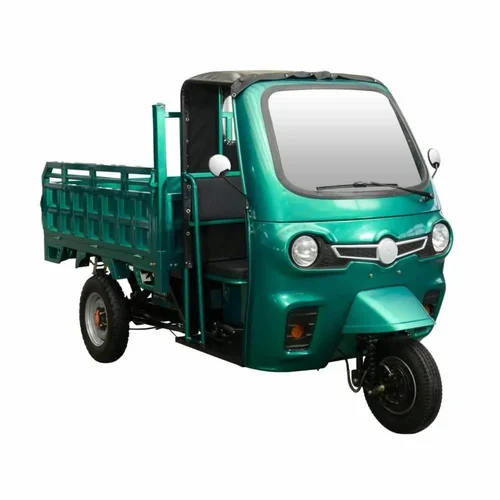The logistics and transportation industry in India is experiencing a major shift with the rise of electric vehicles. Among them, the electric loading auto has emerged as a game-changer for businesses and individuals who depend on affordable and eco-friendly cargo transport. With increasing demand for e-commerce, food delivery, and urban logistics, these vehicles are helping bridge the gap between cost-effectiveness and sustainability.
We will explore what makes electric loading autos popular, their benefits, challenges, government support, and the future of this growing segment.
What is an Electric Loading Auto?
An electric loading auto is a battery-powered three-wheeler designed for transporting goods. Unlike traditional autos that run on petrol, diesel, or CNG, these vehicles operate using rechargeable batteries, offering low operating costs and zero emissions. They are widely used for:
- Last-mile delivery services
- Transporting small to medium-sized goods
- Logistics in urban and semi-urban areas
- Eco-friendly alternatives for businesses
Benefits of Electric Loading Auto
- Low Operating Cost
Running an electric loading auto costs a fraction of what a conventional fuel vehicle requires. Electricity is cheaper than petrol or diesel, making it a cost-effective choice for daily operations. - Eco-Friendly
Electric autos produce zero tailpipe emissions, helping reduce pollution in congested cities. This makes them ideal for businesses that want to adopt green logistics. - Government Incentives
Subsidies under schemes like FAME II and state-level EV policies make these vehicles more affordable for buyers. - High Load Capacity
Despite being compact, electric loading autos are designed to carry a significant amount of weight, suitable for deliveries and small-scale logistics. - Low Maintenance
With fewer moving parts compared to fuel-based engines, electric autos require less maintenance, saving time and money for owners.
Applications of Electric Loading Auto
- E-Commerce Deliveries: Widely used by small businesses and delivery platforms to move goods within city limits.
- Food and Grocery Logistics: Ensures fast, affordable, and eco-friendly delivery of perishable items.
- Courier & Parcel Services: Used for transporting medium-sized consignments.
- Urban Waste Collection: Many municipalities use them for eco-friendly waste transport.
- Small Business Transport: Street vendors, shopkeepers, and wholesalers often use these autos for day-to-day transport needs.
Challenges in Adoption
While Electric Auto are gaining popularity, there are still some challenges that need to be addressed:
- Battery Cost – Batteries form a large part of the cost, making the initial purchase price slightly higher.
- Charging Infrastructure – Limited charging stations in smaller towns slow down adoption.
- Range Anxiety – Many users are concerned about how far the auto can travel on a single charge.
- Financing Options – Access to affordable loans and EMI plans for electric autos is still limited in some regions.
Government Support for Electric Loading Autos
The Indian government is promoting electric vehicles with policies that directly benefit electric loading autos:
- FAME II Scheme: Provides subsidies for electric three-wheelers.
- Reduced GST: EVs are taxed at 5%, compared to higher rates on traditional vehicles.
- State-Level Policies: Many states offer road tax exemptions, permit fee waivers, and incentives for fleet owners.
- Charging Infrastructure Development: Investments are being made in fast-charging stations and battery-swapping networks.
These policies are encouraging drivers, small business owners, and logistics companies to adopt electric loading autos as a sustainable solution.
The Future of Electric Loading Autos in India
The future looks promising for electric loading autos as demand for green mobility continues to rise. Factors driving this growth include:
- Boom in E-Commerce – With online shopping increasing, the need for efficient delivery vehicles will grow.
- Smart Cities Development – Integration of eco-friendly transport will become a key focus.
- Advancement in Batteries – Improved battery life and faster charging will solve current limitations.
- Cost Reduction – With mass production and government support, electric autos will become even more affordable.
Experts believe that by 2030, electric loading autos will dominate the three-wheeler cargo segment in India, contributing to cleaner air and smarter logistics.
Conclusion
The loader auto rickshaw is not just a vehicle—it is a symbol of India’s transition towards sustainable and cost-effective transportation. With government support, rising fuel prices, and growing demand for eco-friendly logistics, these vehicles are quickly becoming the backbone of urban and semi-urban cargo transport. For small businesses, entrepreneurs, and delivery services, adopting electric loading autos is not only a smart financial decision but also a step towards a greener future.
FAQs on Electric Loading Auto
Q1. What is the average price of an electric loading auto in India?
The price generally ranges between ₹1.5 lakh to ₹3 lakh, depending on battery type, load capacity, and features.
Q2. How much load can an electric loading auto carry?
Most electric loading autos can carry between 300 kg to 700 kg, making them suitable for small and medium businesses.
Q3. What is the average range of an electric loading auto?
They usually offer a range of 80–150 km per charge, depending on the battery capacity and load weight.
Q4. How long does it take to charge an electric loading auto?
Standard charging takes 3–6 hours, while fast-charging and battery-swapping solutions can reduce this time significantly.
Q5. Are there subsidies available for electric loading autos?
Yes, buyers can get subsidies under the FAME II scheme and additional benefits from state-level EV policies.
Q6. Do electric loading autos require frequent maintenance?
No, since they have fewer moving parts compared to fuel-powered vehicles, maintenance costs are much lower.
Q7. Who can benefit the most from electric loading autos?
Small business owners, delivery services, courier companies, and e-commerce platforms benefit the most due to lower costs and high efficiency.


















